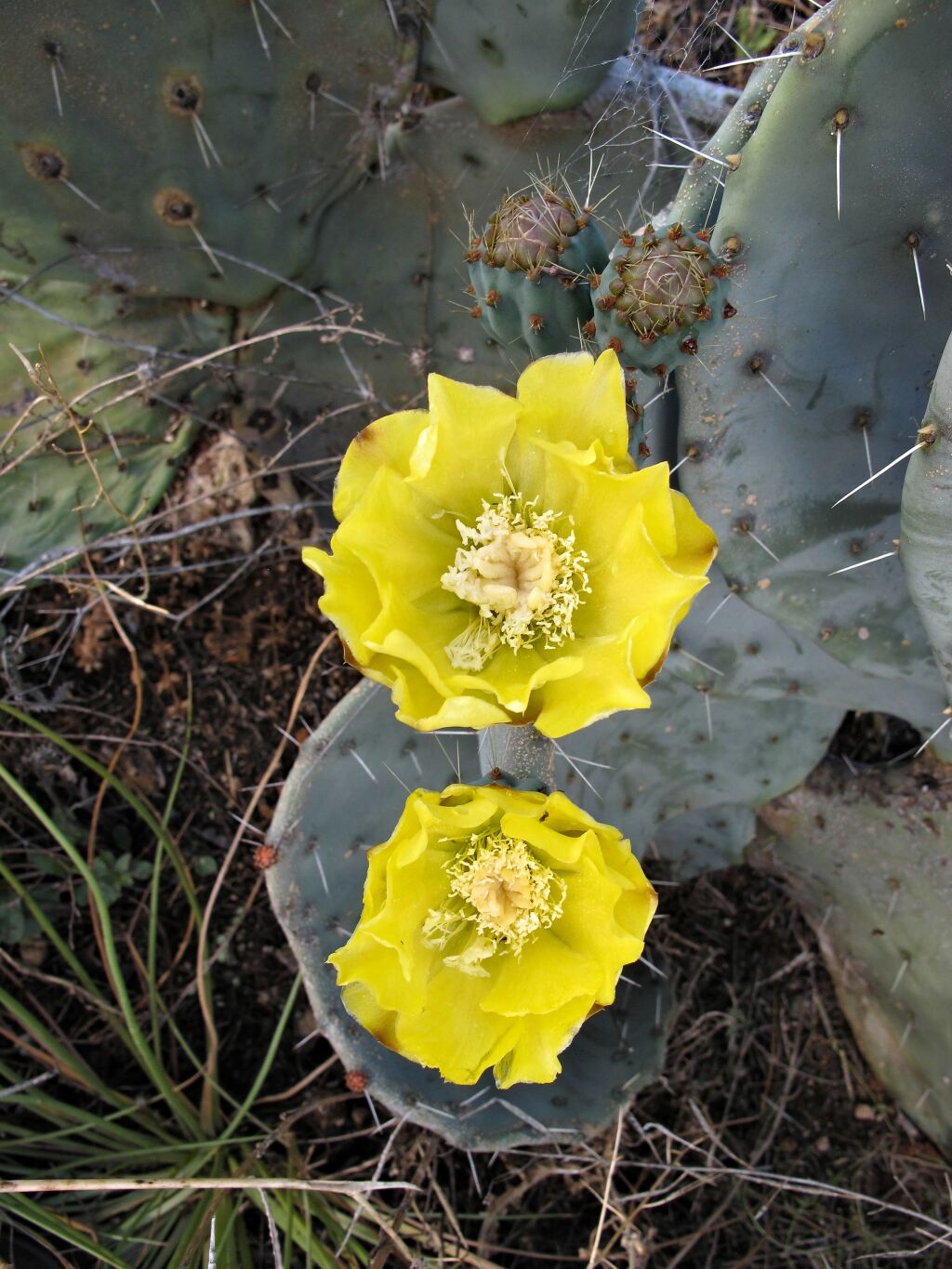Cactaceae
Perennial, terrestrial or epiphytic, usually spinescent stem-succulents; habit various, including low, prostrate or pendulous to erect shrubs or trees. Stems compressed, cylindric, globular, or flattened cladodes, ribbed, winged, tuberculate or smooth. Leaves absent or, if present, succulent, small, simple, entire and caducous, rarely persistent with expanded lamina, spirally arranged, subtending areoles; areoles enclosing buds, from which spines, glochids, hairs, flowers and cladodes develop. Flowers usually solitary and sessile, rarely pedicellate and in panicles or corymbs, often large and showy, usually bisexual, regular (rarely zygomorphic); ovary apparently inferior to (rarely) superior; hypanthium cup-shaped to elongate, usually with tube developed above ovary, areolate, with or without spines or glochids, with scale-leaves that grade into perianth lobes (the outermost here termed sepaloids and the inner petaloids); perianth lobes usually numerous, spirally arranged, free or united at base; stamens usually numerous, inserted within tube, free or the inner connate; anthers 2-locular, dehiscing longitudinally; ovary 3–many-carpellate; style solitary with 3–many stigmas; ovules numerous. Fruit fleshy and indehiscent, naked or with scales, hairs or spines; seeds few–many, sometimes arillate or strophiolate.
About 1810 species in c. 125 genera (Anderson 2001; Parfitt & Gibson 2003) (but taxonomy poorly resolved) virtually confined to the Americas, 1 species extending to tropical Africa, Madagascar, Mascarenes and possibly Sri Lanka; 41 species in 12 genera naturalised in Australia, many serious weeds of native vegetation and agriculture; all species deliberately introduced for ornament, fodder or edible fruits.
Most Opuntia in Victoria reproduce exlusively or predominantly by vegetative means, i.e. detached stems, cladodes or fragments of either, or detached fruits. Some species are always sterile or rarely fertile, although bearing long-persistent sterile 'fruit'. Recruitment by seed is common or occasional only in O. ficus-indica, O. monacantha, O. robusta, and O. stricta. Most populations originate from discarded garden refuse.
Cladode characteristics in the account are based on mature terminal cladodes. Lower cladodes tend to be larger, more spinescent, and may differ in shape and colour from the mature terminal cladodes. Immature cladodes are thinner and usually different in colour to the mature cladodes, and in the early stages have leaves. Fruit colour is based on ripe fruit.
The term 'tuberculate', as applied here, refers to more or less regular, spirally arranged, usually elongated to ovate-rhomboid protuberances or ridges, rather than the more frequently used sense of the term 'roughened by wart-like outgrowths.'
Species descriptions are based on Benson (1982), Telford (1984), field observations, meagre herbarium specimens, and iNaturalist observations.
Cereus hildmannianus K. Schum. subsp. uruguayanus (R. Kiesling) N. P. Taylor, native to Argentina, Brazil and Uruguay, has been collected once in 2007 from a roadside reserve at Tallangatta, persisting from discarded garden waste, but the degree of establishment is not clear. Similarly Echinopsis schickendantzii F.A.C.Weber, native to Argentina, has recently been collected from the Parwan Valley, evidently established from discarded garden waste from adjacent house, but it is barely sparingly established. The two species are not regarded as part of the Victorian flora at this stage. The genera are keyed in the family key, but are not treated further.
 Spinning
SpinningAnderson, E.F. (2001). The Cactus Family. Timber Press.
Benson, L. (1982). The cacti of the United States and Canada. Stanford University Press.
Parfitt, B.D.; Gibson, A.C. (2003). Cactaceae.



